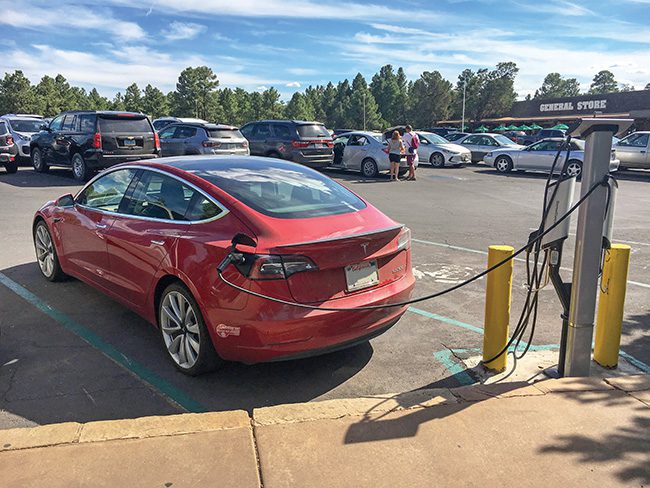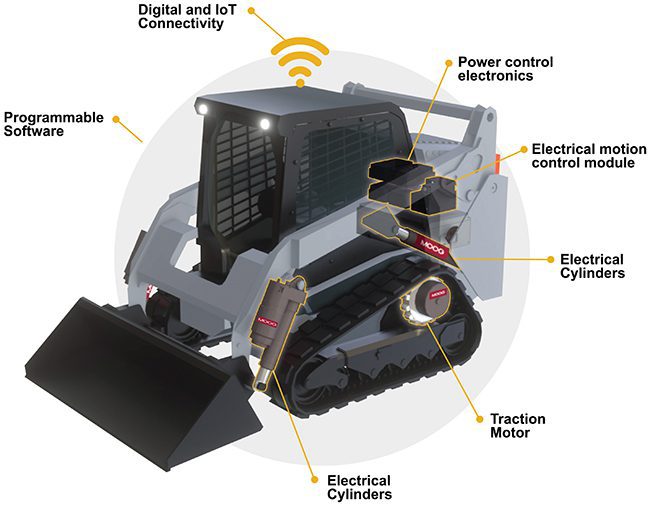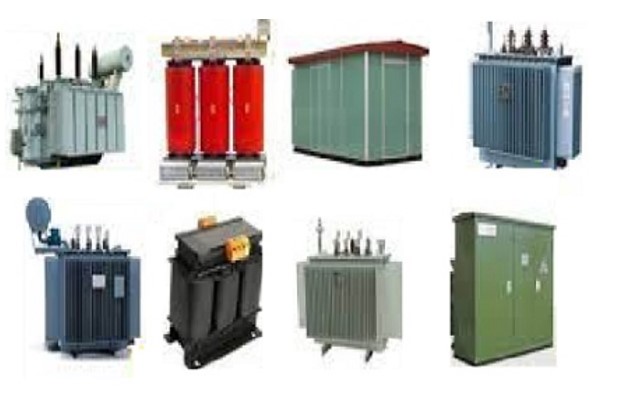Electrification Ignites Debate Over Future of Energy
Electrification—replacing fossil fuels with electricity to provide power—is a major part of the global effort toward decarbonization. It touches many sectors, and is sparking even more discussion about its impact on energy consumption and cost.
The energy transition encompasses many aspects of power generation, with a common theme of finding the most efficient way to produce electricity while minimizing costs. Other factors, though, are impacting today’s decisions about how this energy is produced, and how it is used.
Environmental concerns are part of the equation, as generators consider regulations that increasingly impact their operations. As more industries embrace sustainable business practices, the carbon footprint of their manufacturing becomes a consideration.
Electricity consumers are weighing their own priorities, looking at cost, convenience—and sometimes climate change—when deciding whether to buy an electric vehicle (EV), choose between electric or gas-powered tools and appliances, or heating their home with natural gas or a heat pump.
Want more information about electrification? Read this POWER Interview with four energy company executives, as they discuss the importance and impacts of this energy transition.
The trend toward electrification reflects the broader energy transition, a move away from fossil fuels toward cleaner forms of energy. As with any change in the power sector, there are plenty of issues to discuss, many moving parts, and continuing debate about the role of government in determining how fast electrification will change the energy landscape—and how far it will go with its impact on utilities, industry, and electricity consumers.
“I think the most important focus should be on creating a low-carbon future, so that we can improve the quality of life and protect the environment for people everywhere,” said John Vernacchia, the energy transition segment director for Eaton, a global power management company. “Energy consumption is steadily increasing around the world, the adoption of electric transportation is accelerating, and buildings are becoming more energy-hungry than ever before. We need to rethink energy systems to sustainably meet these new demands. To get there, the sources of power need to become more renewable, resilient, and intelligent.”
“The best argument for electrification is one of necessity,” said Curtis Tongue, co-founder and chief strategy officer at OhmConnect, which works with residential electricity customers on ways to save energy and money. “If we are to stave off the 1.5-degree increase in temperatures before the end of the century, we need to figure out how to effectively decarbonize the economy. About one-third of U.S. emissions come from transportation and another one-third comes from energy use in homes or buildings, so that’s a good place to start. We have the tech and know-how needed to decarbonize those sectors through electrification today.”
‘Opportunity for Consumers’
Electrification at its core is simply replacing the use of fossil fuels with technologies that use electricity as a source of energy—using electricity to heat a home or office building (Figure 1), instead of natural gas, or driving an electric vehicle rather than a car that runs on gasoline. It is, as Vernacchia told POWER, a “real opportunity for consumers… to become producers of energy and have far greater control of when and how they use it,” adding that his company is “working to make sure that power can come from everywhere, and helping our customers seize opportunities created by electrification by breaking traditional boundaries of what electrical systems can do.”
 |
|
1. Eaton has taken an “Everything as a Grid” approach to the energy transition that creates energy hubs with flexible electrical systems—transforming infrastructure for electrification. Solutions include photovoltaic (PV) inverters, electric vehicle (EV) charging systems, and distributed energy resource (DER) management software, among other things. Courtesy: Eaton |
There are economic arguments around electrification, from higher prices for energy, to job losses in the fossil fuel sector, to the cost of electric vehicles compared to gasoline-powered cars and trucks. But analysts acknowledge electrification has environmental benefits, will create jobs, and expand the ways energy is produced and distributed.
Eric Powell, director, North America, at Partners in Performance, told POWER: “There is benefit and bias in every argument, but the best argument that benefits us all and that cuts through the bias is that electrification is the catalyst for new micro-economies that will allow everyone to participate, especially those in disadvantaged communities.” Powell’s group, an Australia-based energy and business consultancy, has worked with many companies to help them reduce emissions and become more sustainable.
“Electrification is part of a ‘noble purpose’ in this energy transition that creates jobs, pushes the edges of innovations, and bridges societal gaps,” Powell said. “Anyone who has a home, a rooftop, land, or any extra space can become a virtual energy source. We should not let ‘red-lining’ of policy stop it. For that very reason, we must go beyond public-private partnerships and create ecosystems of utilities, industry, customers, capital providers, regulators, and educational institutions that will not only enable but sustain this transition.”
Nicholas Smallwood, a senior vice president at Sunrun, a California-based solar power company, told POWER: “Rewiring America’s study shows that 85{64d42ef84185fe650eef13e078a399812999bbd8b8ee84343ab535e62a252847} of U.S. households—roughly 103 million homes—could collectively save $37.3 billion/year on energy bills with electric furnaces and water heaters.” Smallwood said 44{64d42ef84185fe650eef13e078a399812999bbd8b8ee84343ab535e62a252847} of those households “are of low-to-moderate income, and would save an average of $377 to $493 per year. On average, households will save nearly $2,000 each year once they electrify. Decarbonization technologies get exponentially cheaper each year, and prices will continue to fall if we commit to a renewable energy future. Key changes to building codes, regulations, financing, and the electricity market can make converting to an electric home accessible for all Americans.”
Utility Programs
Utilities are adjusting their services to recognize benefits from electrification, particularly with programs related to EVs (Figure 2). Xcel Energy is working with Denver, Colorado, in support of that city’s goal of 30{64d42ef84185fe650eef13e078a399812999bbd8b8ee84343ab535e62a252847} EV adoption by 2030. Eversource is supporting installation of EV chargers in every neighborhood in Boston, Massachusetts, over the next two years.
 |
|
2. Utilities and some government entities have implemented programs to support and incentivize EV adoption among U.S. drivers. Source: U.S. National Park Service / Michael Quinn |
Public Service Co. of New Mexico (PNM) said recently the utility expects the number of EVs in its service territory will more than double by year-end 2023, from about 3,800 currently to 7,800 by the end of next year. State regulators in November 2021 approved PNM’s $9.1 million transportation electrification program, which includes incentives for charging infrastructure and multiple new rates for commercial and residential customers.
The PNM program includes monetary incentives for customers to install residential chargers, and includes funds for low and moderate-income customers to cover up to $2,000 of their costs. There also are time-of-use rate adjustments, allowing customers to charge their EVs overnight for about 3¢/kWh, to incentivize charging at non-peak times for electricity demand.
California officials recently announced TECH Clean California, a $120 million initiative to support the market for cleaner and more-efficient space and water heating technologies. The group’s single-family electrification incentives program seeks to activate the supply chain for clean heating appliances, providing incentives through contractors for the installation of heat pump space and water heating in single-family homes. The program includes contractor engagement, outreach, and training. It already has reached out to hundreds of contractors, hosting events with HVAC (heating, ventilation, and air conditioning) and water heater distributors, and collaborating with manufacturers, distributors, utilities, and contractor trainers.
New York officials have said they want the state to have a carbon-neutral economy by 2050, including eliminating building and transportation emissions. State lawmakers are considering legislation that would ensure all new building construction reaches zero emissions by 2027, as part of an effort to develop two million “electrified or electrification-ready homes” by 2030, according to Gov. Kathy Hochul. The state also wants to make all new school buses electric by 2027, and convert the existing 50,000 bus fleet to be zero-emission by 2035. Ben Prochazka, executive director of the Washington, D.C.–based Electrification Coalition, a group that promotes EV adoption, in a statement called the plan “bold but achievable.”
“Electric school buses are here and ready to be deployed, and it’s exciting to see New York seize the moment,” Prochazka said. “This is a meaningful step toward realizing the national security, public health, and economic benefits that electric vehicles offer.”
Hochul’s building electrification plan will, among other things, “require zero on-site greenhouse gas emissions for new construction no later than 2027,” and would “upgrade New York’s appliance efficiency standards, reducing energy use while saving New Yorkers billions of dollars in utility costs.” The plan will also establish a “green electrification fund” to electrify low-income homes through a new $25 billion, five-year housing capital plan managed by the state office of Homes and Community Renewal.
Growing Sectors
The electrification of transportation includes items often used at power plants, such as forklifts, front-end loaders, and other equipment. “Sustainability, safety, and productivity are primarily what’s important about electrifying transportation as well as fleets and working equipment,” said Joe Baldi, director of strategy and partnerships for Moog Construction, a global construction equipment company that supplies a variety of industries, including the power generation sector. “U.S. and international standards have continually reduced the level of off-highway emissions, and electrified machines continue the journey to remove emissions from heavy equipment.”
 |
|
3. The Bobcat T7X is an all-electric, zero-emission machine. It’s a new take from Moog Construction and Doosan Bobcat on the popular Bobcat loader, used for decades in construction activities. Some machines even include Internet of Things (IoT) connectivity. Courtesy: Moog Construction |
Among Moog’s offerings is an intelligent machine electrification system. Moog has partnered with Doosan Bobcat on the creation of the all-electric compact track loader, known as the Bobcat T7X (Figure 3). The T7X is an all-electric, zero-emission machine, which Moog said delivers “the power and performance of a diesel hydraulic machine but without the noise, emissions, and hydraulic leaks.”
Baldi told POWER, “Electric machines are also much quieter. That improves safety for people working on and around the machines; workers can easily talk with one another and hear what’s happening on the job site. And workers are no longer exposed to emissions that pose long-term hazards to their health. Electric machines could do some stereotype-busting, too, because they’re cleaner, safer, and easier to work with, which might attract the next generation of workers.”
Baldi added, “Electric machines with built-in sensing and software also allow operators more control, and vehicle owners gain greater connectivity and automation. With the right architecture and supporting ecosystems, electric machines bring productivity gains to the construction industry that their hydraulic and diesel counterparts can’t match.”
Chris Roman, a certified energy manager and director of business development with California-based Conservant Systems, said his company’s technology is “a parallel to electrification,” primarily by making systems more efficient. Energy analysts often point to energy efficiency opportunities presented by electrification in buildings, transportation, and manufacturing, in energy and cost savings along with emissions reductions.
Roman told POWER his company’s High Efficiency Dehumidification System, or HEDS, “is a patent-protected, proprietary energy recovery method designed to save more than 40{64d42ef84185fe650eef13e078a399812999bbd8b8ee84343ab535e62a252847} of the cooling and heating energy related to the cooling, dehumidification, and reheat process, while also eliminating the health, wellness, product, and productivity loss risks caused by poor relative humidity control” in buildings. “Our technology is definitely under energy efficiency [EE],” he said. “If solar is on a roof and our gear is [the] air handlers… the air handlers essentially have coils and they get hot or cold.” Roman said Conservant’s technology “plays with those coils in a way that it eliminates your heating needs. It eliminates the boilers firing, which is decarbonization. We decarbonize, and we save energy and we save money.”
“Energy efficiency is a vital part of the electrification strategy, it has given utilities a head-start on the journey,” said Powell. “EE and demand-side management (DSM), and demand response (DR) programs have blazed a path for these fresh decarbonization pathways. EE, DSM, and DR collectively have mitigated sources and uses of energy for decades now.”
Said Tongue: “Energy efficiency can play a helpful role in reducing the overall demands on the grid. According to a recent DOE [Department of Energy] study, over the next two decades, national adoption of grid-interactive efficient buildings could be worth $100 billion to $200 billion in U.S. electric power system cost savings.”
Grid Impacts
The challenge of electrification includes its impact on the grid, which will vary by region, time of day, and also the time of year. Economic arguments continue; many in the energy sector point to the cost differences between heating with natural gas, and heating with electricity. EVs will increase the load on the grid, which could hike electricity costs. Utilities will need to adjust their resource planning to incorporate the impacts of electrification, something already occurring with time-of-use rate adjustments.
Briggs & Stratton, known for its small-engine mowers, generators, and other tools, provided POWER with commentary about grid impacts, writing, “As more products and industries go electric, there is some concern around the impact to an aging grid. Electric companies across the country are evaluating what is required to modernize their grid infrastructures, connect distributed energy sources, and put software in place to improve diagnostics and visibility to how the grid operates.”
The company acknowledged how electrification can empower consumers. “Yes, we believe that as electrification options continue to reach more consumers, it will provide them with options so they can make the energy decisions that are right for them,” the group wrote. “Energy storage systems, which use an inverter and batteries, provide a viable solution for scalable power storage that integrates with any power source including solar, wind, and the grid. There are cost savings for consumers in the form of lower energy bills and tax breaks. Electrified systems are a great source of power during an outage as well.”
“One of the key challenges for homeowners is the upfront cost,” Tongue told POWER. “Anyone that strolls down the aisle of Home Depot sees that replacing your gas furnace with a more efficient heat pump costs significantly more. Driving down that point-of-sale cost to enroll those devices in flexible grid services will be key to smoothing this transition.”
Powell talked about the energy decisions faced by consumers: “The battle between natural gas and electricity is not a new one. For decades, utilities have marketed the benefit of gas versus electric for appliance or end-uses [furnaces, water heater, cooking, and even lighting]. In this electrification transition, the battle between natural gas and electricity does not continue.
“To my knowledge, there are no natural-gas-powered ‘Teslas’ in homes. Adding a plug for an EV does not displace natural gas end-uses. EVs are just another end-use, just like washer/dryers, big screen TVs, and LED bulbs,” Powell said. “With that, I would expect little to no demand destruction to occur in local natural gas distribution, while demand destruction would have an impact on customer bills. If the next part of the economic argument is that electrification would increase the heating bill, that may not be completely valid.”
Said Vernacchia: “Electrification has a cascading impact on energy infrastructure. And, it’s about more than electrifying the vehicle or charging or even building systems. We see flexible load management as essential to optimize energy use at home and for the grid. So, energy consumers can squeeze the most out of renewables and storage, keeping power flowing to essential loads no matter what, and adjusting those loads as needed.”
—Darrell Proctor is a senior associate editor for POWER (@POWERmagazine).








